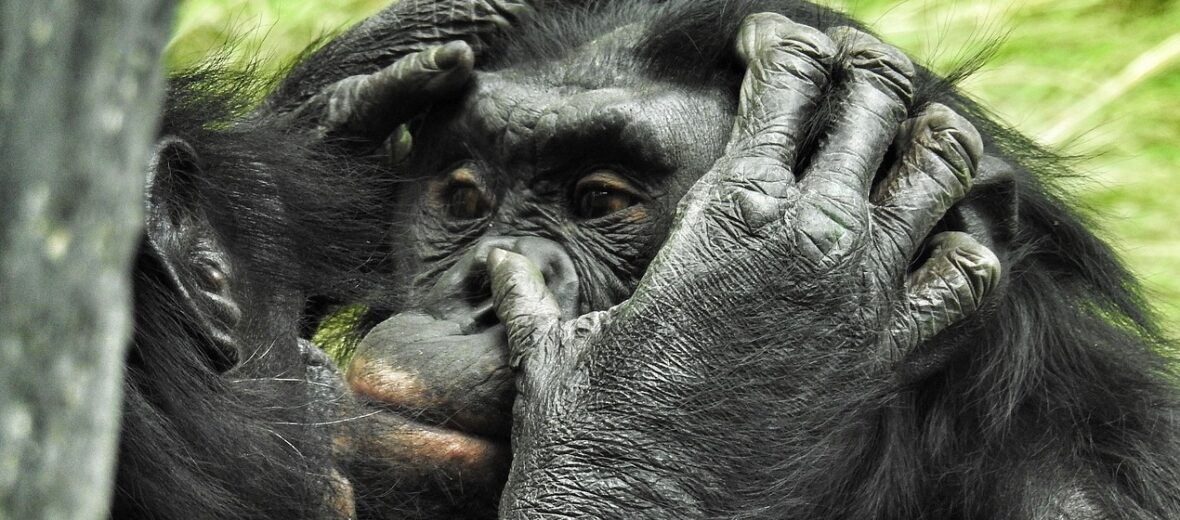
The bonobo, aka dwarf chimpanzee, gracile chimpanzee, or pygmy chimpanzee, has many similarities to common chimpanzees, yet subtle differences classify them as their own species. Bonobos are generally peaceful to one another, however, battles can break out between rival troops. Although no reports of killings have ever been documented. Most often, disputes are resolved via sex. Like true hippies. Far out, man. This sociosexual behavior is unique to these creatures. Sadly, due to poaching, habitat destruction, and civil unrest these beautiful, peaceful, and magnificent critters are listed as Endangered by the IUCN and their populations are decreasing. It is estimated that there are only a mere 10,000 remaining in the wild, to date.
First the Stats…
Scientific name: Pan paniscus
Weight: Up to 130 lbs.
Height: Up to 3.8 feet
Lifespan: Up to 40 years
Now on to the Facts!
1.) Bonobos are the most bipedal of all the great apes, sans us humans of course. They spend up to 25% of their walking time on their hind quarters.
2.) Female bonobos rule the roost in their troops. This makes them a matriarchal society. What other mammal is ruled by the matriarch? You guessed it, the elephant.
3.) Beyond the need for reproduction, they utilize sexual relations to relieve stress, to reinforce community bonds, reduce anxiety, and cull anger. The females also use sex to receive food and even to move their way up in the social hierarchy. Clever girl.
4.) Males and females both engage in sexual encounters with their own gender as well as the opposite gender. They have been documented doing so with any member of the group. At times, they even face each other during the act.
5.) They feed on fruits, leaves, stems, worms, insects, small fish, and crustaceans.
But wait, there’s more on the bonobo!
6.) These primates travel in troops of up to 10 individuals.
7.) Bonobos are polygynandrous (promiscuous – males and females mate with multiple partners).
Did you know…?
The bonobo is so intelligent that they have been documented communicating with humans, understanding language both vocal and sign), using tools, and even playing musical instruments.
8.) Females undergo up to an 8-month gestation (pregnancy) that yields a single infant.
9.) Weaning takes place over a period of 4 years.
10.) Vocal communication takes place via high-pitched barks.
But wait, there’s still more on the bonobo!
11.) Contrary to chimpanzees, bonoobos are not afraid of water. They even fish for shrimp in lakes and streams.
12.) Each night, the bonobos will construct a new nest in the trees.
Now a Short Bonobo Video!
Be sure to share & comment below! Also, check out the Critter Science YouTube channel. Videos added frequently!
Want to suggest a critter for me to write about? Let me know here.
Learn more about all kinds of cool critters, right here!
Some source material acquired from: Wikipedia & IUCN



